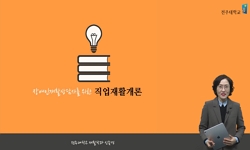현대사회에서 장애인의 근로활동은 자아실현과 사회통합, 삶의 질 향상을 모두 충족시킬 수 있는 중요한 방안으로 인식됨에 따라 장애인의 기초생활보장과 더불어 생산능력의 극대화가 중...
http://chineseinput.net/에서 pinyin(병음)방식으로 중국어를 변환할 수 있습니다.
변환된 중국어를 복사하여 사용하시면 됩니다.
- 中文 을 입력하시려면 zhongwen을 입력하시고 space를누르시면됩니다.
- 北京 을 입력하시려면 beijing을 입력하시고 space를 누르시면 됩니다.

한국 국민연금제도와 미국 사회보장 장애연금제도 비교연구 : A Comparative Analysis of the Korean National Pension and the United States Social Security Disability Insurance = A Study on the Work Incentive of the Disability Pension
한글로보기https://www.riss.kr/link?id=A40104812
- 저자
- 발행기관
- 학술지명
- 권호사항
-
발행연도
2001
-
작성언어
Korean
- 주제어
-
KDC
338
-
등재정보
KCI등재
-
자료형태
학술저널
- 발행기관 URL
-
수록면
91-122(32쪽)
- 제공처
- 소장기관
-
0
상세조회 -
0
다운로드
부가정보
국문 초록 (Abstract)
현대사회에서 장애인의 근로활동은 자아실현과 사회통합, 삶의 질 향상을 모두 충족시킬 수 있는 중요한 방안으로 인식됨에 따라 장애인의 기초생활보장과 더불어 생산능력의 극대화가 중요한 정책 목표로 부각되고 있다. 이에 본 연구에서는 장애인의 근로능력을 배양하고 근로복귀를 촉구하기 위해 미국과 한국 장애연금제도의 대상선정, 급여방식, 직업재활서비스를 중심으로 근로유인기제를 비교분석하여 앞으로 한국에 도입 가능한 근로능력 향상 및 근로유인 방안들을 도출해내었다. 미국의 경험에 의하면, 첫째, 한국의 장애연금제도는 장애인의 근로 참여를 촉구하기 위해서 근로능력있는 장애인을 배제시키는 한편 장애가 심각하지 않더라도 현실여건상 근로가 어려운 장애인이 대상에 포괄되도록 해야 한다. 이를 위해 우선 연금제도의 장애개념을 근로장애 개념으로 전환시켜 자격기준에 직업능력 평가기준을 도입하여야 한다. 급여상실의 불안을 최소화하기 위해 근로소득이 자격기준보다 증가하더라도 고용이 안정될 때까지 자격을 확대하는 한편, 연금대상에서 벗어나더라도 쉽게 자격을 재획득하게 하는 방안이 함께 도입되어야 할 것이다. 셋째, 장애연금이 단순히 장애인의 소득을 보충하는 역할에서 벗어나 소득보장 뿐만 아니라 직업재활서비스도 제공하는 패러다임으로 전환되어야 할 것이다. 장애인의 근로능력 배양과 근로복귀를 촉구하기 위해 공식적인 의뢰체계를 구축하여 장애인을 다양한 직업재활기관들과 연계하는 한편 근로능력이 향상된 장애인들을 고용과 밀접히 연결시키는 방안이 적극적으로 모색되어야 할 것이다.
다국어 초록 (Multilingual Abstract)
In the present society, as the labor activities of disabled persons are recognized as an important measure to meet their self-realization, social integration, and the improvement of the quality of life, the maximization of the productive capacity as w...
In the present society, as the labor activities of disabled persons are recognized as an important measure to meet their self-realization, social integration, and the improvement of the quality of life, the maximization of the productive capacity as well as the security of basic life for disabled persons stands out as an important policy objective. Therefore, the purpose of this study is to compare the American and Korean disability pension systems in three dimensions: eligibility, benefit, and vocational rehabilitation services, and to introduce the feasible schemes of the work incentive to Koreans with disabilities, in order to improve the working abilities of disabled persons and promote their return to work.
According to the American reference, the following conclusions can be drawn: First, while disabled persons with working abilities should be kept out of their being eligible for disability pension not to lower their will to work in advance, disabled persons who have difficulties to work in their actual conditions although their disabilities are not severe should be included in beneficiaries. To accomplish this, the disability pension system in Korea should change the 'disability' concept of beneficiaries into that of a 'work disability', and the assessment standards of vocational ability in eligibility requirements should be introduced.
Second, after selecting eligible people, various work incentives should be introduced so as not to lose the disabled persons' willingness to work. The plans should be introduced so that, if labor income increases more than eligibility requirements, qualification standards are expanded until the employment becomes stable; and, if withdrawn from qualification, disabled persons will have access to obtain qualification at any time.
Third, the paradigm of the disability pension should be converted from merely playing a role to supplement the income of disabled persons, to providing vocational rehabilitation services as well as securing income in order to improve their working abilities and promote their participation in working activities. For providing vocational rehabilitation services, a formal referral system should be constructed in cooperation with various vocational rehabilitation agencies, and a work incentive for vocational rehabilitation agenaes should be introduced to connect disabled persons who have increased their working abilities with their employment.
동일학술지(권/호) 다른 논문
-
- 한국사회보장학회
- 정영호
- 2000
- KCI등재
-
- 한국사회보장학회
- 김병익
- 2001
- KCI등재
-
- 한국사회보장학회
- 배준호
- 2001
- KCI등재
-
- 한국사회보장학회
- 이견직
- 2001
- KCI등재




 KISS
KISS







